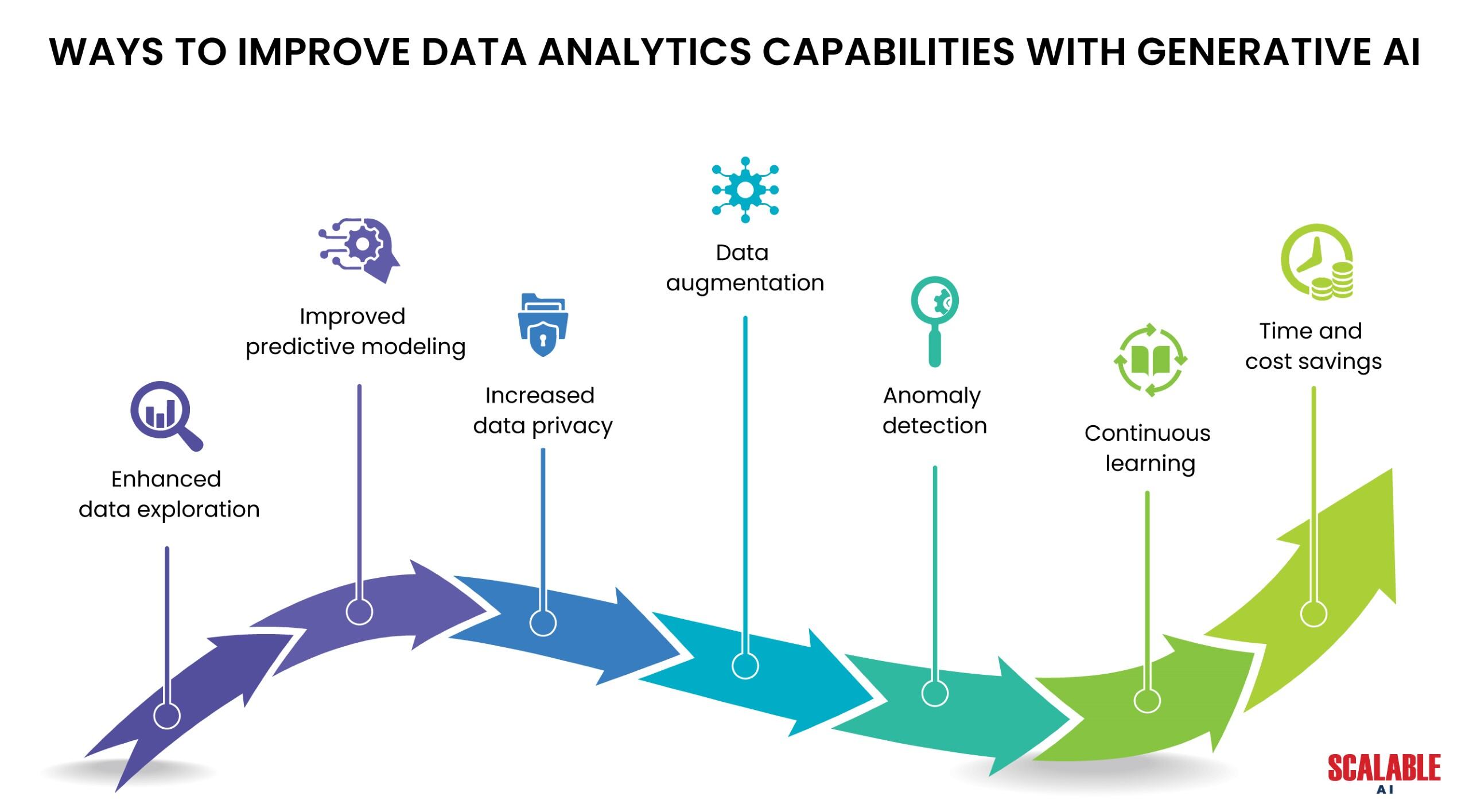ChatGPT launched publicly on November 30, 2022, and acquired 1 million users in just five days. ChatGPT, followed by BARD and other Generative Artificial Intelligence (AI) models, has got the attention of everyone. For some enterprises, Generative AI models hold unprecedented potential to perform routine tasks like data reorganization and classification faster and more efficiently. Now, enterprises are moving beyond buzz and headlines and focusing on the benefits and use cases of Generative AI.
What are Generative AI models?
It can generate new data by identifying patterns in the existing dataset. The Generative AI model delivers complex outputs making it different from traditional AI. The algorithms can learn the desired results by analyzing the training data. Generative AI models will generate new content and data, similar to the inputs like audio, video, texts, and codes. It might be complex, but the generative AI models deliver content that looks human-like and authentic.
How do Generative AI Models work?
Employs machine learning processes that are further inspired by the human brain’s neural networks. The model is trained by feeding large datasets that serve as inputs for the foundational model. The information can be text, images, visuals, or relevant code to the desired output. After the training data has been collected, the AI model analyzes the patterns and relationships within the data set to understand the relationship and rule of the content. Further, the AI model keeps automating the learning process to improve the capability to deliver simulated human-generated output. The more information the model generates, the more complex output can be achieved. The revolutionary success is due to the new-found capability to learn from different approaches like unsupervised or semi-supervised learning. Now, enterprises can use the collected data to create better and more efficient foundation models. It can serve as the base for developing new AI systems that simultaneously perform many tasks.
How does Generative AI improve data analytics capabilities?
- Enhanced data exploration
- Improved predictive modeling
- Increased data privacy
- Data augmentation
- Anomaly detection
- Reduced bias
- Continuous learning
- Time and cost savings
How can industries benefit from Generative AI?
Healthcare & Life sciences
Enhanced disease diagnosis
Generative AI algorithms can assist healthcare professionals in disease diagnosis. Generative AI can help identify patterns and generate accurate diagnoses by analyzing a wide range of patient data, including medical records, imaging scans, and genetic information.
More personalized treatment plans
Generative AI can analyze large datasets comprising patient information, treatment histories, and genetic profiles, allowing healthcare providers to develop personalized treatment plans. This customized approach to healthcare ensures that patients receive treatments tailored specifically to their needs, resulting in better outcomes.
BFSI
Risk Assessment
Generative AI can assist in risk assessment by analyzing diverse data sources, including financial statements, credit scores, customer profiles, and market trends.
Customer analytics and personalization
Generative AI can analyze customer data, such as transaction history, demographics, and behavior, to generate insights and segment customers based on their preferences, needs, and profitability.
Retail
Personalization
Generative AI algorithms can analyze large volumes of customer data to create highly personalized shopping experiences. Retailers can generate customized product recommendations and marketing campaigns by tracking customer behavior, preferences, purchase history, and other attributes.
Pricing and Promotion Optimization
Generative AI can predict future demand, optimize pricing strategies, and suggest promotional offers. Generative AI algorithms can support retailers to make more data-driven decisions regarding pricing decisions and promotional offers.
Hospitality
Recommendations and Upselling
Generative AI algorithms can analyze guest data, preferences, and past behaviors to generate personalized recommendations for additional services, upgrades, or add-ons.
Dynamic Pricing and Revenue Optimization
Generative AI algorithms can analyze factors such as demand, market trends, historical data, and competitor pricing to generate optimal pricing strategies.
Read Whitepaper Generative AI Opening a New Frontier to Technology Innovation

